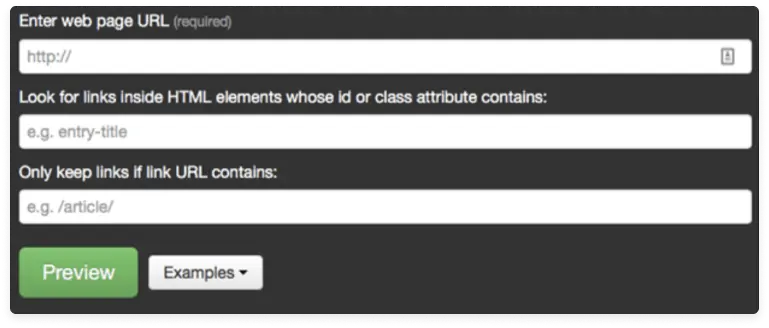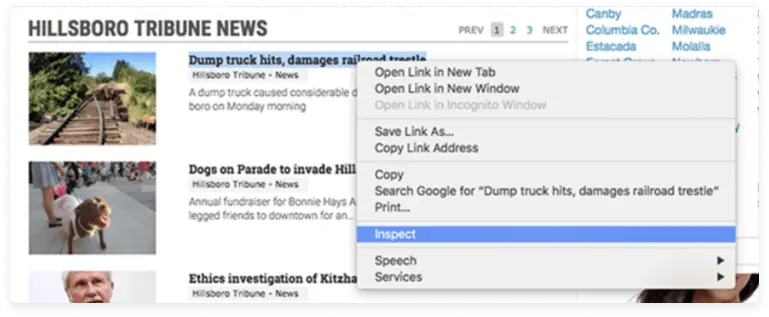Introduction
In recent years RSS feed has gained popularity. Initially, blogs popularized them, and later on major News Sites, social networks, and forums started using them. In course of the time, RSS feed has become a convenient way for users to get all news in a single place.
However, there are websites that fail to provide them, and it got annoying for those who actively used them and for other related sources that use them for data extraction. So, to get constantly updating content from the resources you are interested in, you can turn any website into an RSS feed with special skills or tools.
Some online tools are rather simple, others are advanced, but anyway you can find the solution to get an RSS feed for the resource you want or some particular category or author from it.
How to Find an RSS Feed that Is Hidden
Before we propose you some tools’ overview, let’s check how you can find or even create, an RSS feed for any site. Most sites have RSS feeds by default since they are built on CMSs (Content Management Systems), and the feature of RSS feed is offered in them by default.

WordPress, Medium, Google’s Blogger, or Yahoo’s Tumblr, are the most platforms sites are built on, so you can try the following:
For WordPress add /feed to the URL. What’s more, it’s possible to provide feeds to only specific site categories, comments, or tags.
For a Medium’s blog, just insert /feed/ before the name of the publication in the URL: medium.com/feed/example-site.
The same can be done for an author page, then medium.com/@username turns into medium.com/feed/@username.
For Blogger add feeds/posts/default to the URL’s end. For a Tumblr site, it’s enough to add /RSS to the homepage’s URL end, like this http://example.tumblr.com/rss.
Most Popular Tools to Convert a Website into an RSS Feed
When the RSS feed is hidden, it’s already clear, now let’s check how to turn a website into an RSS feed with the help of some popular off-the-shelf tools.
Feedity is a web-based simple tool that helps users automatically generate feeds and even allows to add Start and End blocks, which help notify the service where each post starts and ends. Premium account allows more advanced features, like feeds merging and data integration.
FeedYes allows to turn a website into RSS feed, or even just a page. The tool also allows you to transform specific pages and use tags and headlines on your own resource.
Ponyfish is sometimes called the web-based tool most easy to use. It allows RSS feeds creation from almost any page online. A point-and-click the interface allows you to set up the links a user wants to include in the feed with just a few steps.
WebRSS is a free solution that helps not only create and track RSS feeds but also markets them. A user can host any RSS Feed on his custom-made start the page or pin it to the major ping servers.
Feed43 is a more complex tool peculiar for the possibility to turn both HTML and XML documents into RSS feeds. The tool can extract snippets of HTML and text.
How to Create a Custom RSS Feed With a “Five Filters” Tool
FiveFilters.org offers a solution that can regularly scan any web page and users adding every new link to an RSS feed created. With just a tool and several parameters you can do it quickly and hassle-free.

A “Preview” button allows you to check the collection of headlines the tool will select for you and make sure everything works in the right way.You may be a bit bewildered with the second line, but the needed elements can be found through Inspect command in Google Chrome.

The third field, allows users to specify links needed, to add some wording, and even to filter out ads.
RSS Feed Questions and Answers
How to create an RSS feed from a web page?
You can use online RSS builders or create XML files with basic feeds manually. However, the best option for websites with multiple URLs and frequently changed content would be to use content management systems with built-in RSS features, like WordPress.
How to convert a website to an RSS feed?
Use online tools like Feedily, FeedYes, PonyFish, WebRSS, Five Filters. They convert the given URL into RSS feeds
How to find the RSS feed of a website?
To find the hidden RSS feed of any website, try to manually change the page URL and add /feed in the end (for WordPress and other popular CMSs). E.g., type https://data-ox.com/feed/ to see the RSS feed of this website homepage https://data-ox.com/.
Final thoughts
So, now you know at least 3 ways you can convert a website to an RSS feed and follow all the news you are interested in. All you need is just to select the one that best meets your needs. Good Luck!









